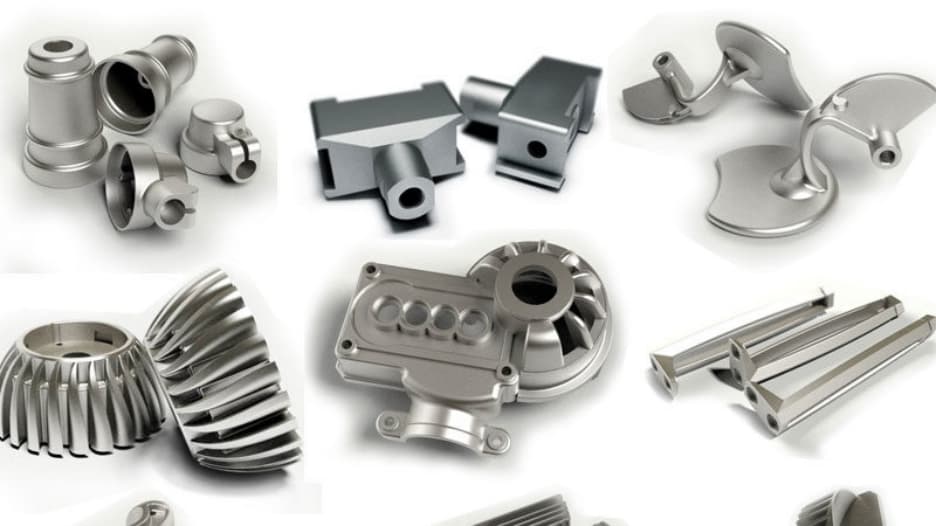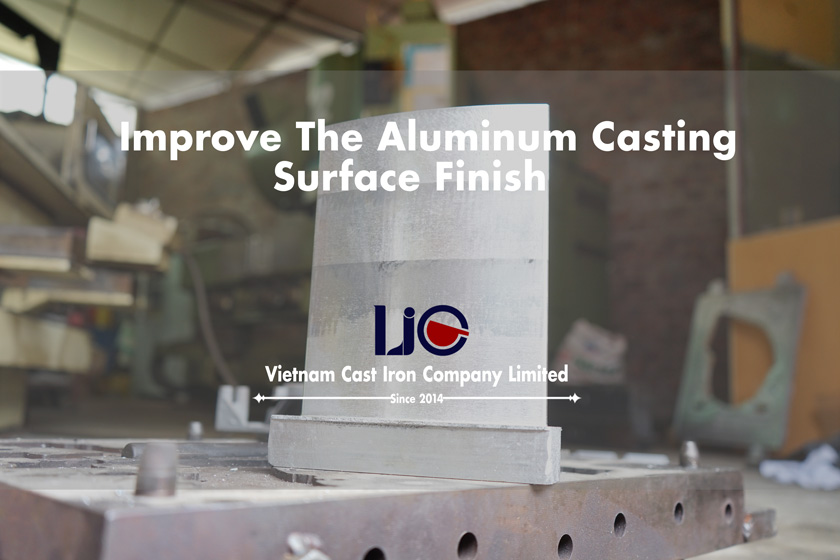Comprehending the Advantages and Ranges of Aluminum Castings in Sector
Aluminum castings have come to be progressively vital throughout different markets due to their distinct residential properties and manufacturing flexibility. Their lightweight and corrosion-resistant nature makes them suitable for demanding applications. Various casting methods enable for precise and intricate styles. As sectors evolve, recognizing the series of aluminum casting options and their advantages is essential. This expedition increases inquiries concerning their future role in manufacturing and sustainability. What exists in advance for aluminum in these sectors?
The Essentials of Aluminum Casting Processes
Although light weight aluminum casting procedures vary in strategy, they all share a common objective: to change liquified aluminum into exact shapes and parts. The key approaches of light weight aluminum casting include sand casting, pass away casting, and investment casting. In sand spreading, molds are produced making use of sand, permitting for complex designs yet often leading to a rough surface area finish. Die casting employs high-pressure shot of molten light weight aluminum right into steel molds, generating high accuracy and smooth surface areas, appropriate for automation. Investment spreading, or lost-wax casting, entails producing a wax pattern coated with a ceramic covering, providing extraordinary information and dimensional accuracy. Each approach has its certain applications and considerations, including price, production volume, and intricacy of the shapes generated. Comprehending these fundamental strategies is necessary for sectors that depend on light weight aluminum castings to fulfill their layout and functional needs.
Secret Benefits of Using Aluminum Castings
Aluminum castings offer countless benefits that make them a preferred choice in various markets. One of the vital advantages is their lightweight nature, which enables much easier handling and lowered shipping costs. This characteristic contributes to improved power effectiveness, particularly in automotive and aerospace applications. Additionally, aluminum exhibits superb deterioration resistance, extending the life expectancy of elements and decreasing upkeep requirements.
An additional advantage is the adaptability of aluminum castings, which can be formed right into complicated forms, allowing innovative designs that conventional products may not accommodate. The thermal and electrical conductivity of light weight aluminum additionally makes it excellent for applications needing warm dissipation or efficient electric connections. Moreover, aluminum castings are recyclable, lining up with sustainability objectives and lowering ecological effect. Overall, the combination of strength, sturdiness, and adaptability makes aluminum castings a crucial element in modern-day production techniques across numerous fields.
Usual Types of Aluminum Castings
Aluminum castings are created with numerous approaches, each fit for different applications and requirements. Amongst one of the most typical techniques are sand spreading, which supplies versatility and cost-effectiveness, and die casting, known for its precision and effectiveness. Understanding these procedures is necessary for picking the appropriate casting method for specific industrial needs.
Sand Casting Process
A substantial part of aluminum castings in market is generated through the sand casting process, which is renowned for its versatility and cost-effectiveness. This approach includes developing a mold from a sand mix, enabling the production of complicated forms and huge parts. Sand spreading is particularly useful for small to medium-sized manufacturing runs, as it needs very little first financial investment in tooling. The procedure starts with pattern production, followed by mold preparation, pouring liquified aluminum, and finally, cooling and completing. The high thermal conductivity of aluminum assurances even cooling down, minimizing the threat of flaws. As a result, sand casting continues to be a preferred option for producers looking for efficiency and flexibility in their light weight aluminum casting applications.
Die Casting Techniques
Die casting strategies stand for an extremely efficient technique for generating light weight aluminum castings, particularly fit for high-volume manufacturing. These techniques mainly consist of two usual kinds: warm chamber and cold chamber pass away spreading. In hot chamber pass away spreading, the liquified aluminum is injected right into the mold from a tank that is heated, making it ideal for low-melting-point alloys. Conversely, chilly chamber pass away casting involves pouring the liquified aluminum into a separate chamber prior to shot, which accommodates greater melting-point products. Both techniques supply precision fit intricate geometries and attaining exceptional surface coatings. In addition, die spreading is recognized for its quick cycle times, minimizing production costs while keeping uniformity in high quality across big amounts of components.
Applications in the Automotive Market
Changing lorry design and performance, light weight aluminum castings play an important role in the vehicle industry. These castings add significantly to weight decrease, improving gas performance and overall vehicle dynamics. Key applications consist of engine blocks, transmission real estates, and suspension components, where their light-weight nature and strength are vital.
Aluminum castings likewise permit intricate geometries, enabling suppliers to develop intricate styles that enhance air flow and lower drag. This capacity is especially helpful in electrical and hybrid cars, where efficiency and performance are paramount.
Furthermore, the corrosion resistance of aluminum extends the life-span of vehicle parts, minimizing upkeep prices and boosting vehicle dependability. The convenience of light weight aluminum castings supports both automation and personalized applications, making them a preferred option among vehicle engineers and designers. Aluminum Casting. As the industry remains to introduce, light weight aluminum castings will remain an important element in the pursuit of advanced automobile modern technologies
Aerospace Sector Use
In the aerospace market, light weight aluminum castings are essential to the style and performance of airplane parts. These castings are utilized in numerous applications, including engine parts, structural parts, and interior fittings. Their light-weight nature adds to boosted gas efficiency and total performance, which is vital in aerospace design.
Aluminum castings likewise supply excellent strength-to-weight ratios, allowing manufacturers to develop detailed layouts without endangering structural integrity. The ability to generate complex geometries makes aluminum casting a preferred selection for parts that need precision and reliability.
Additionally, light weight aluminum's resistance to deterioration enhances the durability of aerospace components, minimizing maintenance costs and improving safety and security (Aluminum Casting). The spreading procedure permits high-volume production, fulfilling the sector's needs for effectiveness. Overall, aluminum castings play an essential duty beforehand aerospace technology and optimizing aircraft layout, adding to the industry's continuous advancements

Advantages Over Various Other Materials
Aluminum castings use substantial benefits over various other materials, making them a favored choice in various industries. One of the key benefits is their lightweight nature, which adds to minimized energy consumption and improved performance in applications such as vehicle and aerospace. Additionally, aluminum displays outstanding rust resistance, enabling extended sturdiness and lowered maintenance expenses.
The material's remarkable thermal and electrical conductivity additionally improves its appeal, particularly in applications calling for warmth dissipation or effective power transfer. Aluminum Casting. Aluminum castings likewise provide excellent dimensional security, making sure precise resistances and lowering the possibility of flaws during the production procedure
Additionally, the adaptability of light weight check that aluminum enables complex forms and detailed designs, which can be attained via different casting approaches. This versatility makes aluminum a useful alternative for producers intending to innovate while keeping cost-effectiveness and high quality. To wrap up, light weight aluminum castings stand out because of their special mix of residential or commercial properties that cater to diverse commercial needs.
Future Patterns in Aluminum Casting Modern Technology
Future patterns in aluminum casting modern technology try here are progressively concentrated on automation and the advancement of sophisticated alloys. Automation stands to enhance performance and precision in casting processes, lowering labor prices and enhancing product consistency. Concurrently, advancements in alloy formulations promise to broaden the series of applications for aluminum castings, dealing with details efficiency needs in various markets.
Automation in Casting Processes

Advanced Alloys Advancement
With the recurring development of product scientific research, the growth of advanced alloys is readied to transform aluminum spreading innovation considerably. These ingenious alloys are developed to boost mechanical properties, corrosion resistance, and thermal security, providing to varied commercial applications. Scientists are concentrating on crossbreed alloys that integrate elements such as magnesium, silicon, and zinc to attain peak performance. Additionally, advancements in computational modeling and simulation are enabling the prediction of alloy behavior under numerous problems, enhancing the style procedure. The combination of recycling technologies is also coming to be crucial, enabling producers to generate high-performance aluminum castings while lessening ecological impact. As these fads proceed, the light weight aluminum casting market is likely to witness significant renovations in effectiveness, sustainability, and product high quality.
Regularly Asked Inquiries
Exactly How Is Aluminum Casting Eco-friendly?
The question of aluminum casting's ecological friendliness emerges from its recyclability and lower power consumption compared to other steels. Furthermore, advancements in sustainable practices even more enhance its environmentally friendly reputation within making processes.
What Is the Typical Life Expectancy of Aluminum Castings?
The common life-span of light weight aluminum castings differs based on application and setting, usually varying from several years to years. Factors such as direct exposure to corrosive components and mechanical tension can substantially affect their resilience and long life.
Can Aluminum Castings Be Recycled?
Aluminum castings can certainly be recycled. This process substantially reduces waste and saves resources, enabling manufacturers to recycle materials efficiently. Recycling light weight aluminum castings more adds to sustainability and lessens the environmental impact connected with light weight aluminum manufacturing.
What Are the Common Flaws in Aluminum Castings?
Usual defects in light weight aluminum castings include porosity, shrinking, imbalance, and surface area imperfections. These problems can develop from inadequate pouring strategies, incorrect alloy make-up, or insufficient cooling, inevitably influencing the quality and performance of the end product.
Just how Do I Choose the Right Aluminum Casting Process?
Picking the appropriate light weight aluminum spreading procedure requires examining manufacturing quantity, component intricacy, and preferred homes. Aspects such as price, preparation, and product qualities likewise influence the decision, ensuring perfect results for particular applications.